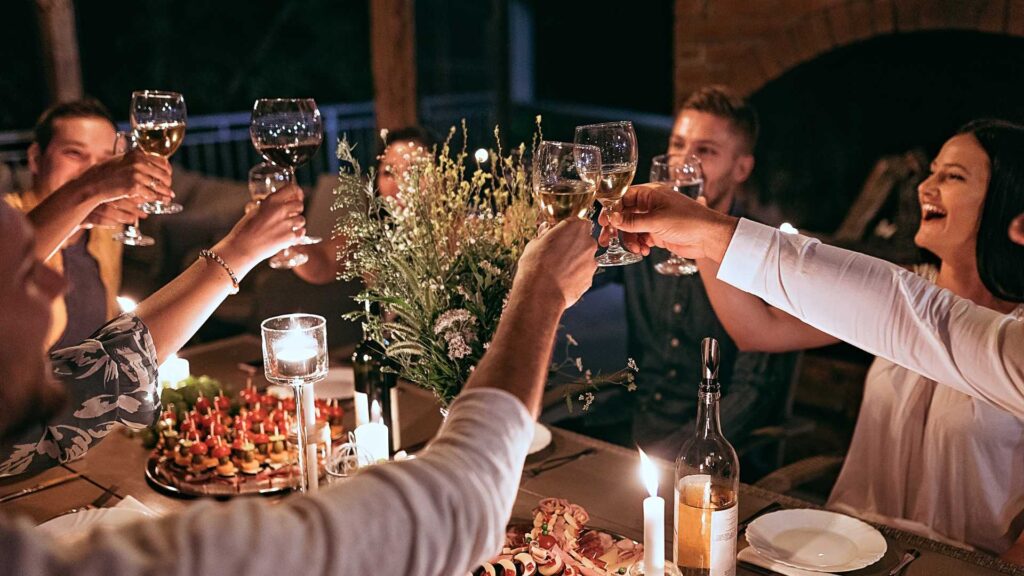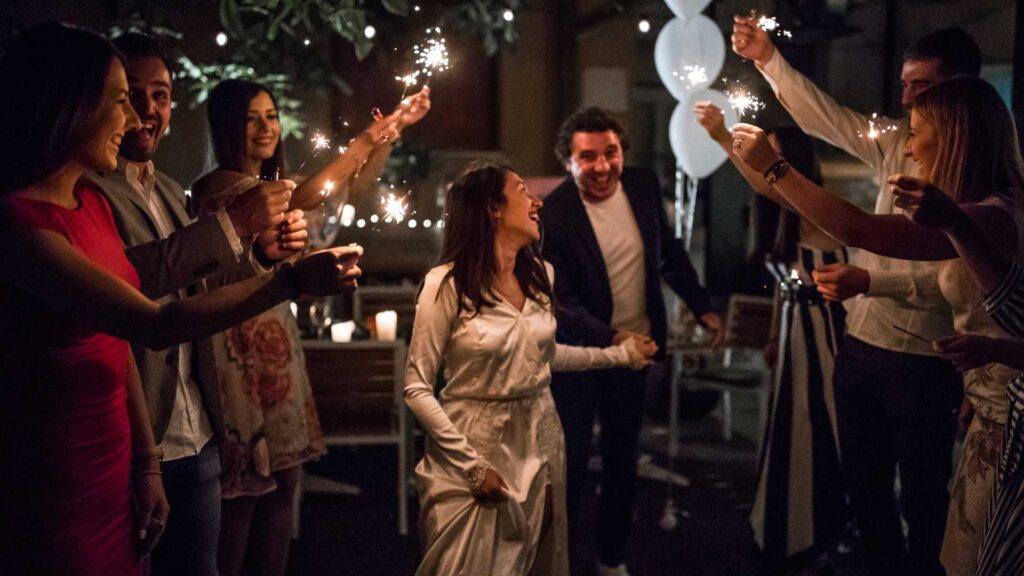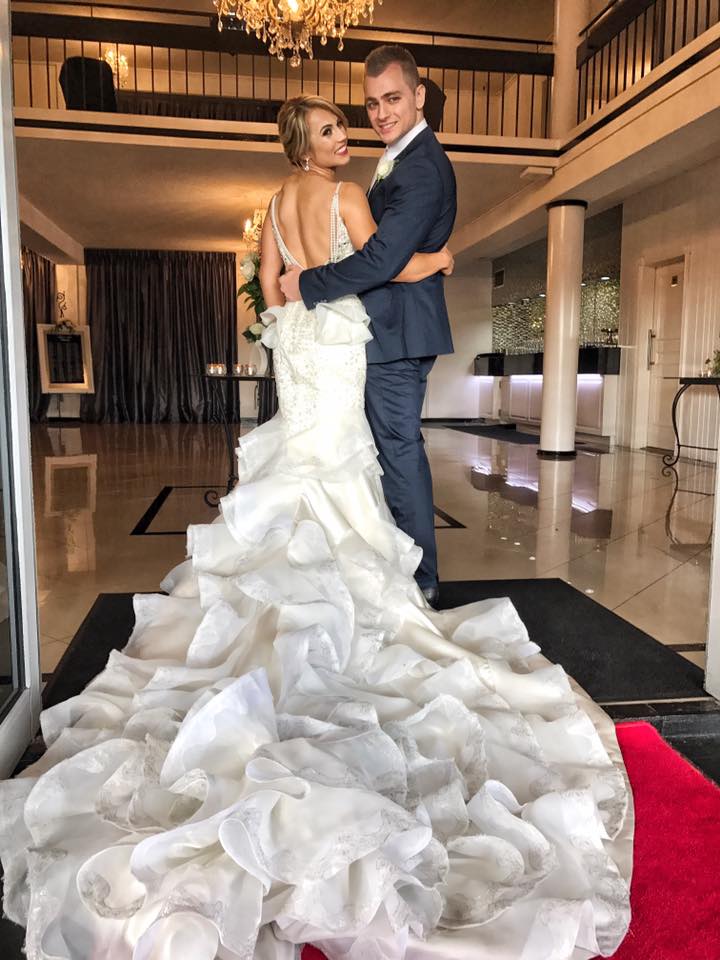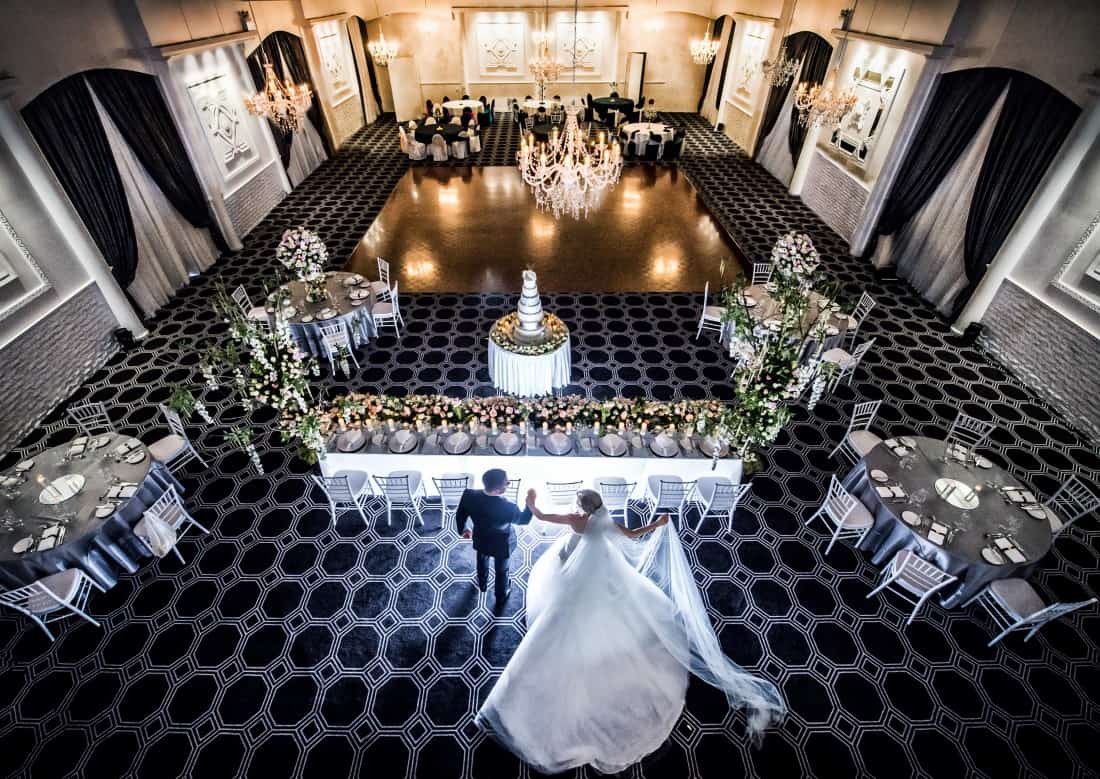The sequence of events at a wedding reception is carefully planned to ensure a smooth flow and celebrate the newlyweds meaningfully. Typically, the first event after the ceremony is the couple’s grand entrance into the reception venue. This moment is highly anticipated as it sets the tone for the evening.
The newlyweds are often introduced to the guests by the DJ or the master of ceremonies, and they make their entrance to enthusiastic applause and cheers. This grand entrance can be as formal or fun as the couple desires, sometimes incorporating a special song or dance.
Following the entrance, the next important event is usually the first dance. This is a symbolic moment where The recently wed pair hits the dance floor together for the first time as husband and wife. The choice of song for the first dance is often significant to the couple, and it is a moment cherished by both the couple and the guests.
Other formalities, such as speeches or toasts from close family members and friends and cutting the wedding cake, often follow the first dance. Initial events set the stage for the rest of the reception, transitioning into an evening of dining, dancing, and celebration.
Let’s Get Straight to the Point
A wedding reception’s sequence of events is designed to flow smoothly and celebrate the couple. It typically starts with the newlyweds’ grand entrance, followed by the first dance and formalities like speeches and cake cutting.
The evening continues with dining, dancing, and customary practices, including the bouquet and garter throw. Proper planning, including coordinating with vendors and finalising timelines, ensures a memorable and well-organised celebration, ending with a creative send-off for the couple. This guide helps cover every detail, making the day enjoyable for all.
Preparing For The Reception
Finalising The Timeline
- Coordinate with Vendors: Ensure all vendors, including the caterer, photographer, and performers, receive a copy of the finalised timeline.
- Delegate Responsibilities: Assign tasks to your wedding party members, such as the chief bridesmaid and best man, to help keep the event on track.
Setting Up The Venue
- Early Arrivals: Some guests may arrive at the reception venue early, so ensure that everything is set up and ready before they do.
- Venue Setup: Arrange tables, chairs, and decorations. Ensure seating charts are prominently displayed so guests can easily find their assigned tables.
The Reception Begins
Cocktail Hour
- Transition Period: While the couple and wedding party take photos, guests often experience a lull between the ceremony and reception. To keep them entertained, a cocktail hour is a perfect solution.
- Entertainment: Provide drinks and light snacks to keep guests occupied and happy during this time.
Guests Enter The Reception Area
- DJ/MC Announcements: The DJ or MC will announce the arrival of the wedding party and family members.
- Creative Entries: Consider a fun entrance, such as a humorous dance or a special performance, to excite guests for the evening ahead.
Introducing The Wedding Party
- Reception Planning Guide: Provide the emcee with a detailed guide that includes the names, titles, and order of arrival for the wedding party.
- Pronunciation Tips: Ensure the emcee knows how to pronounce everyone’s names correctly to avoid awkward moments.
The Bride And Groom’s Grand Entrance
- Musical Coordination: Choose a special song for your entrance and coordinate with the DJ or band for a memorable introduction.
- First Appearance as a Couple: This is the couple’s first official appearance as husband and wife, marking the beginning of the celebration.
The Dining Experience
The Bride And Groom’s Meal
- Priority Seating: The bride and groom should be the first to be served, allowing them a moment to relax and enjoy their meal.
- Socialising: After eating, the couple can mingle with guests, visiting each table to greet everyone personally.
Serving The Meal
- Meal Options: The meal can range from a formal sit-down dinner to a more casual buffet, depending on the couple’s preferences.
- Efficient Service: Plan for an efficient service to ensure that guests are well-fed and ready for the evening’s activities.
Traditional Ceremonies
Cutting The Cake
- Symbolism: The cake cutting is a symbolic gesture representing the couple’s commitment to care for each other.
- Timing: This typically occurs about an hour before the reception ends, signalling the upcoming conclusion of the festivities.
Offering A Blessing
- Personal Touch: If the couple desires, a blessing can be offered by a minister, parent, or close family friend to add a personal touch to the occasion.
The Toasts
- Order of Toasts: Begin with the best man and maid of honour, followed by parents and other guests who wish to speak.
- Expressing Gratitude: The couple should take this opportunity to thank their guests for being part of their special day.
Special Dances
The First Dance
- A Moment Alone: The first dance as a married couple is a special moment, typically occurring after the couple’s grand entrance.
- Choreographed or Natural: Whether it’s a choreographed routine or a simple, heartfelt way, this dance is a highlight of the reception.
Father-Daughter Dance
- A Tradition of Love: The father-daughter dance is a traditional moment where the bride shares a special dance with her father or father figure.
- Personalised Choices: A sibling or close family member can step in for this touching moment for those without a father present.
Mother-Groom Dance
- Honouring the Mother: Similar to the father-daughter dance, this dance allows the groom to share a special moment with his mother or mother figure.
Fun And Festivities
Bouquet And Garter Toss
- Traditional Toss: The bouquet toss is aimed at unmarried women, while the garter toss is for unmarried men.
- Making Memories: These events are lighthearted traditions that add fun to the evening.
Late-Night Snack
- Keep the Party Going: Offering a late-night snack like finger foods helps sustain energy levels and keeps guests dancing into the night.
Dancing The Night Away
- Kick-Off: Start the dance floor with an energising song to get everyone up and moving.
- Final Dance: Plan a memorable group photo during the final dance to capture the joy of the evening.
The Grand Exit
Sending Off The Couple
- Creative Send-Offs: Consider bubbles, sparklers, rose petals, or beach balls for a unique send-off.
- Memorable Goodbye: This is the couple’s final moment with their guests before they leave to start their new life together.
A successful wedding reception relies on careful planning and coordination. Following a structured timeline ensures that your special day unfolds smoothly, allowing you to focus on celebrating with your loved ones.
This guide provides a clear structure covering every aspect of your wedding reception, from when guests arrive to the final send-off. Following these steps can create a memorable experience you and your guests will cherish for years.




